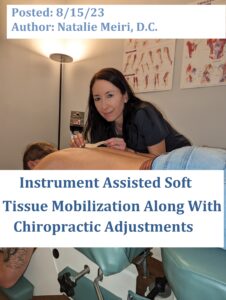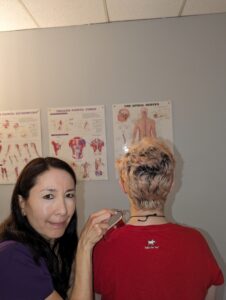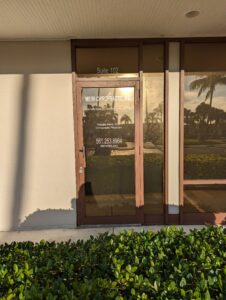
A common source of pain and disability is soft tissue injury with its resultant fibrosis and loss of elasticity and strength. Soft tissue injury and fibrosis may result from acute or repetitive trauma to muscular, tendinous, myofascial, or ligamentous tissue. Therefore, adjustments of the joint without attention to the supporting and controlling effects of the soft tissues (i.e. muscles, tendons, ligaments, fascia) will likely result in recurrence of joint dysfunction (misalignment of joint). The reason being, abnormal soft tissue patterns and presentations may persist after joint function has been restored. Accordingly, any soft tissue problems need to be treated along with the joint dysfunction.
Soft Tissue Manipulation (STM) techniques are defined as those physical methods applied to muscles, ligaments, tendons, fascia, and other connective tissues with the goal of therapeutically affecting the body. This post is about Instrument Assisted Soft Tissue Mobilization (IASTM) which is a form of soft tissue manipulation technique.
What is Instrument Assisted Soft Tissue Mobilization (IASTM)?
Instrument Assisted Soft Tissue Mobilization (IASTM) is a specialized manual therapy technique that involves the use of handheld instruments to diagnose and treat soft tissue dysfunctions. For instance it helps chronic postural related problems, neck/back pain, carpal tunnel syndrome, shoulder pain, sciatica, foot pain/ plantar fasciitis, hip/knee problems, tennis elbow, hand pain and many other soft tissue injuries. It is a non-invasive procedure that aims to improve musculoskeletal function, mobilize adhesions/scar tissue, reduce pain, and enhance the body’s natural healing processes.
IASTM may have come from gua sha, an ancient Chinese medicine therapy. This therapy used common items, such as spoons, coins, or pieces of bamboo to scrape across the affected soft tissue. Additionally, this was meant to create sha (chi energy and/or petechiae), which helped overcome blood stagnation by improving circulation.

IASTM- Benefits and Goals
- Stimulates tissue healing and regeneration– By increasing blood flow IASTM promotes the body’s natural healing processes. IASTM brings oxygen, nutrients, and immune cells to the tissues, accelerating the healing process and reducing inflammation.
- Improves tissue extensibility and flexibility– By breaking up collagen cross-links, scar tissue, and decreasing adhesions IASTM restores proper tissue extensibility and flexibility. Furthermore, this improves range of motion and enhances joint function. Ultimately, it alleviates pain associated with restricted movement.
- Modulates pain perception– By stimulating sensory nerve receptors in the skin and underlying tissues it helps modulate pain signals. So IASTM provides pain relief and provides a sense of relaxation.
- Breaking down scar tissue and adhesions– Chronic overuse, injury and surgery can cause Scar tissue and adhesions. Next these can restrict mobility, reduce circulation and cause pain. Similarly, IASTM breaks down and remodels scar tissue. Finally, improved tissue mobility and function occur.
What to Expect?
Firstly, contemporary IASTM utilizes ergonomically designed stainless steel instruments that have various curves. These instruments have smooth edges and come in different shapes and sizes to accommodate different areas of the body.
Secondly, the intention is to find areas of scar tissue and break them up.
Thirdly, gentle pressure to the affected area is applied while gliding the instrument over the skin. The unique design of the instrument allows for precise targeting of specific tissues, including muscles, tendons, ligaments, and fascia. The outcome is a smoother muscle contraction, decreased tension, pain relief and healing.

Soft Tissue Manipulation Procedures and Chiropractic Adjustments at Meiri Chiropractic in West Palm Beach, Florida
Probably the most well known soft tissue technique is massage (methodical, friction and kneading of the body upon bare skin). Subsequently, some chiropractors do not use manual therapy (non thrust techniques) and refer their patients for massage (i.e. Swedish, deep tissue) because of their exclusiveness to adjustments (thrust techniques). And in the chiropractic practice, one of the functions of massage is to relax your muscles. This prepares the irritated region for adjustments. However, they are NOT the same procedure. It fact, massage and manual therapy are a different code in insurance billing ( e.g. medicare).
What’s the Restrictive Barrier Difference?
First, massage is great for pain reduction, relaxation, improved circulation and even softens superficial fascia. However, massage is not soft tissue manipulation therapy which crosses the restrictive barrier. Many conditions require the restrictive barrier to be found and accurately engaged to provide functional improvement. Moreover, the barrier concept provides an important distinction between massage procedures and other Soft tissue manipulation techniques.
Second, you cannot get whichever therapy (massage) you prefer and expect the same outcome. Some soft tissue injuries/conditions may require a soft tissue manipulation technique beyond massage for restoration of full functional and/or structural improvement. Also, when considering the use of treatment of certain soft tissue conditions a working knowledge of the fundamental principles behind them is necessary and helpful.
Third, indeed, at Meiri chiropractic, we are specialists rendering our own services (adjustments along with manual therapy) after examining and diagnosing you. And Instrument Assisted Soft Tissue Mobilization Along with Chiropractic Adjustments are utilized at Meiri Chiropractic!
Call your West Palm Beach Chiropractor at 561-253-8984 to find out more about Instrument Assisted Soft Tissue Mobilization Along with Chiropractic Adjustments or to make an appointment.